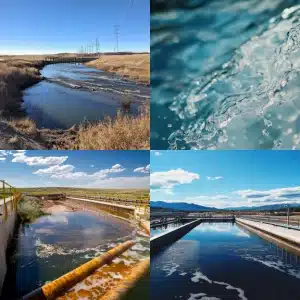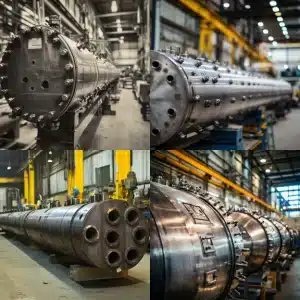
Pressure Vessel and Pipe Testing is essential for ensuring safe, reliable, and long-lasting equipment performance. Proper testing identifies cracks, corrosion, leaks, and other defects before they compromise operations. Engineers rely on both destructive and non-destructive methods to verify structural integrity and regulatory compliance. With the right testing approach, you reduce risk, protect personnel, and extend asset lifespan. Red River ensures every testing process meets rigorous safety and quality expectations.
Understanding Pressure Vessel and Pipe Testing
Pressure Vessel and Pipe Testing is necessary to verify system integrity, pinpoint hidden defects, and ensure long-term safety. This process is foundational to preventing failures and maintaining operational reliability. Pressure Vessel and Pipe Testing begins with identifying how vessels behave under load and how materials respond to pressure over time. With thorough testing, engineers reduce risk, improve performance, and maintain compliance across multiple industrial sectors.
Testing also plays a central role in meeting Pressure Vessel Safety Standards and Compliance requirements. This includes following ASME expectations, adhering to testing procedures, and applying repeatable methods to detect weaknesses. For engineers, this level of consistency ensures systems remain reliable while supporting safe daily operations.
Industry Requirements for Pressure Vessel and Pipe Testing
Ensuring compliance is essential. Industry standards explain what are the safety standards for pressure vessels, how regulations apply, and what testing procedures must be followed. They also define what is ASME code for pressure vessel safety, outlining rules for materials, fabrication, inspection, and testing requirements.
During Pressure Vessel and Pipe Testing, engineers gather quantitative insight into structural performance. This includes confirming wall thickness, evaluating weld soundness, assessing internal and external conditions, and inspecting safety devices. Testing supports both initial certification and periodic verification, which are mandatory for maintaining safe operating conditions.
To support reliability, Red River maintains strict adherence to testing expectations and quality processes while applying the highest level of engineering discipline. This commitment ensures Pressure Vessel and Pipe Testing remains accurate, consistent, and aligned with industry requirements.
Key Testing Methods Used in Pressure Vessel and Pipe Testing
Effective Pressure Vessel and Pipe Testing relies on multiple inspection methods. These approaches ensure full visibility of material conditions and structural behavior.
Hydrostatic Testing
- Uses water to pressurize the vessel.
- Identifies leaks or weak points at pressures above normal operating levels.
- Ensures core structural integrity.
Non-Destructive Testing (NDT)
- Provides deep inspection without damaging the vessel.
- Covers surface, subsurface, and internal defects.
Ultrasonic Testing
- Uses sound waves to detect variations in thickness and internal flaws.
- Highly effective for monitoring corrosion and erosion progression.
Magnetic Particle Testing
- Detects surface and near-surface defects.
- Ideal for ferromagnetic materials.
These methods support accurate assessments in Pressure Vessel Inspection and Maintenance work and help determine how do pressure vessels comply with safety regulations through proper documentation and follow-up procedures.
Common Defects Found During Pressure Vessel and Pipe Testing
Testing provides insights into failure risks that may develop over time. Key issues identified include:
Corrosion and Erosion
- Occur from fluid contact, chemicals, pressure cycles, or environmental factors.
- Testing reveals thinning walls, pitting, and degrading structural strength.
Cracks and Stress-Related Defects
- Often invisible without advanced inspection tools.
- Require NDT methods like ultrasonic or magnetic particle testing.
Leaks and Pressure Loss
- Early detection prevents equipment downtime.
- Testing helps confirm whether welds and seams remain secure.
These findings help determine how often do pressure vessels need to be inspected, which is based on material condition, operational demands, and regulatory guidelines.
Engineering Best Practices for Pressure Vessel and Pipe Testing
Engineers conducting testing must maintain a consistent and safety-focused approach. Proper execution ensures accurate results and preserves equipment integrity.
Important Safety Habits
- Confirm all test equipment is calibrated.
- Follow protective protocols to reduce risk exposure.
- Ensure test environments support safe pressure applications.
- Document every step thoroughly for compliance tracking.
Choosing the Right Test Method
The correct method depends on material type, design features, and operational conditions. Engineers often review:
- Expected pressure range
- Wall thickness
- Service conditions
- Welded vs. seamless construction
- Required regulatory compliance
Each situation guides method selection and influences how to inspect a pressure vessel effectively.
Inspection Checklist Essentials
A proper evaluation includes:
- Exterior and interior surface review
- Weld condition checks
- NDT examination as needed
- Verification of pressure control devices
- Data recording for integrity tracking
These steps meet expectations for what to include in a pressure vessel inspection checklist while ensuring reliable Pressure Vessel and Pipe Testing outcomes.
The Value of Pressure Vessel and Pipe Testing
Pressure Vessel and Pipe Testing helps maintain a safe, dependable, and efficient operation. This process is essential for meeting industry standards, reducing downtime risks, extending equipment lifespan, and protecting personnel. Red River follows proven practices to ensure your vessels and piping systems meet performance demands while maintaining full regulatory compliance. With the right testing approach, your systems stay safe, reliable, and ready for long-term service.
Need a reliable partner?
Red River specializes in the design and manufacturing of pressure vessels. We also fabricate related items such as prefabricated spools and skid packages.
Reach Out to us today and experience the Red River difference. Where American Made and American Values come together, we care more.
Frequently Asked Questions
1. How do pressure vessels comply with safety regulations?
Compliance is achieved by following ASME requirements, using proper materials, ensuring certified fabrication, and performing regular inspections and testing.
2. How often do pressure vessels need to be inspected?
Inspection timing varies by service conditions, material type, and regulatory expectations. Testing is typically required at scheduled intervals or when conditions change.
3. How to inspect a pressure vessel effectively?
Engineers check external and internal surfaces, confirm weld quality, review thickness readings, perform NDT, and verify safety device operation.
4. What are the safety standards for pressure vessels?
Safety standards define design rules, material selection, fabrication processes, and testing requirements needed for safe vessel operation.
5. What is ASME code for pressure vessel safety?
ASME establishes design formulas, construction rules, testing procedures, and material limits essential for safe vessel performance.
Key Takeaways
- Pressure Vessel and Pipe Testing ensures safe and reliable operation.
- Testing identifies corrosion, cracks, and hidden defects.
- Industry standards guide all testing and inspection requirements.
- Proper testing improves compliance and extends equipment lifespan.
- Red River supports high-quality testing through engineering expertise.
Related Blog Post
- Pipe Thickness in Pressure Vessels: Why It Matters for Safety and Reliability
- Understanding the Difference Between Pipes and Pressure Vessels
- Difference Between Piping Systems and Pressure Vessels
- Pressure Vessel and Pipe Testing
- Pressure Vessels vs Piping Systems Cost
- Understanding the Differences Between Pipes and Pressure Vessels




